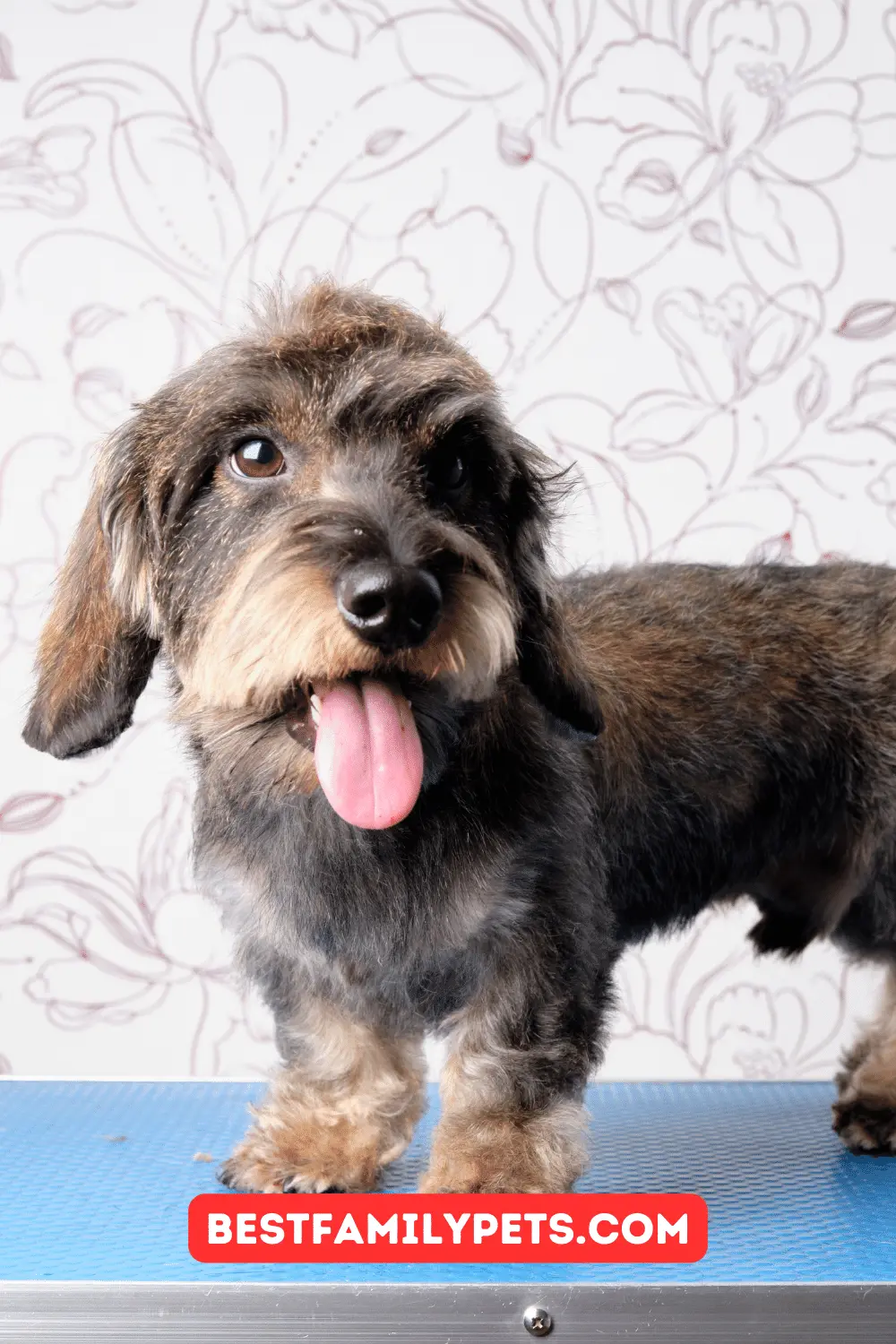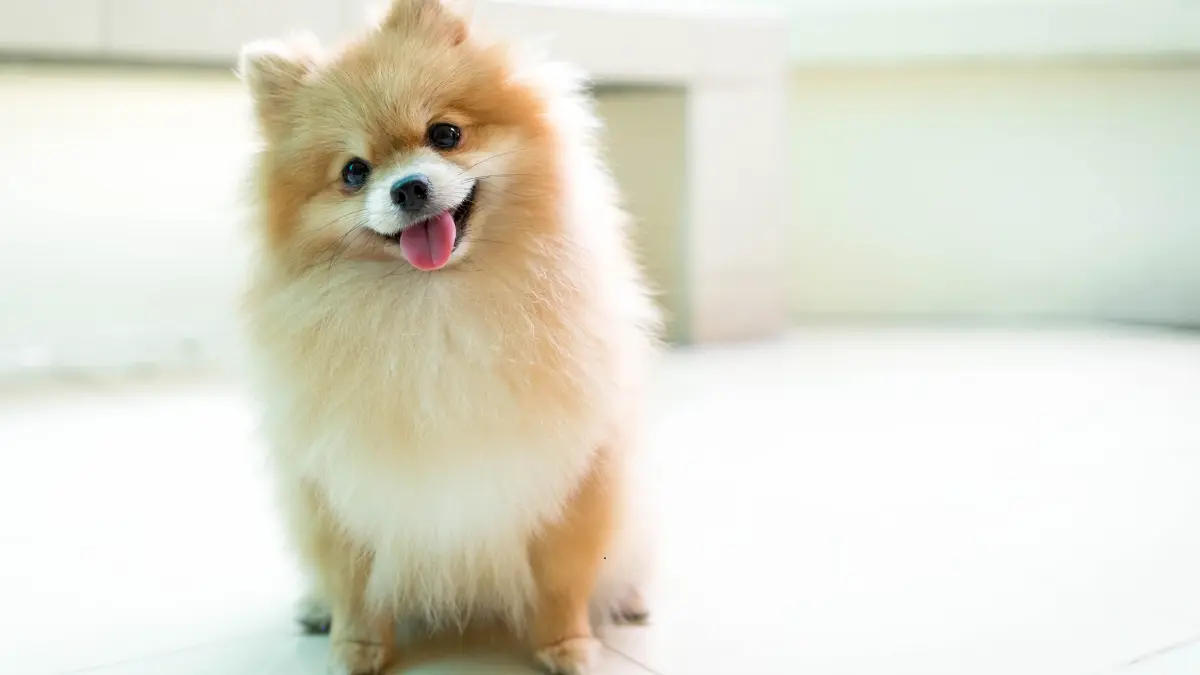Wiry Doxie: Exploring the Wire haired Dachshund
Discover Wire haired Dachshund personality, history, characteristics, facts & unique traits. Learn about wire haired dachshund puppies & responsible ownership.
The Wirehaired Dachshund, often nicknamed the “Wiry Doxie,” is a captivating breed with a personality as distinct as its wiry coat. These little bundles of energy possess a playful spirit and a tenacious spirit, making them both delightful companions and capable working dogs.
But beneath their quirky exterior lies a rich history and a set of unique characteristics that have stolen the hearts of dog lovers for generations.
In this comprehensive guide, we’ll delve into the world of the Wirehaired Dachshund, exploring their fascinating origin story, deciphering their personality traits, and equipping you with the knowledge to determine if this “Wiry Doxie” might be the perfect furry friend for you.
Table of Contents
10 Defining Aspects of the Wirehaired Dachshund Personality
The Wirehaired Dachshund, also known as the “Wiry Doxie,” is more than just a short-legged charmer. Their wiry coat and playful demeanor mask a complex personality brimming with unique traits that have stolen hearts for generations. Understanding these key characteristics is crucial for anyone considering welcoming one of these lively companions into their home.
Here are 10 defining aspects of the Wirehaired Dachshund personality:
- Independent Spirit: As a Dachshund owner once quipped, “They’re not stubborn, they’re just highly independent thinkers!” Wirehaired Dachshunds possess a strong sense of self-reliance, a legacy from their working dog past. They can be independent thinkers during training, requiring patience and positive reinforcement methods.
- Playful Energy: Don’t be fooled by their short stature! These “little sausages” are “bursting with beans,” as another owner described them. Wirehaired Dachshunds are brimming with energy, thriving on interactive games, walks, and adventures, making them ideal companions for active individuals and families.
- Loyal Companions: While they may not be “lap dogs,” Wirehaired Dachshunds form strong bonds with their loved ones. One owner shared, “They may not be cuddly, but their loyalty is unwavering.” These dogs shower their families with affection in their own way and enjoy participating in daily activities.
- Bold and Confident: Wirehaired Dachshunds possess a “courageous spirit,” as described by a breeder. They are often unafraid of challenges and even bigger dogs. Early socialization and training are crucial to ensure their confidence translates into well-adjusted behavior.
- Alert Watchdogs: Their inherent alertness makes them excellent watchdogs, readily notifying their owners of any perceived threats or unusual sounds. As one owner stated, they are “always on guard duty, keeping their families safe.” This watchfulness can also lead to barking, requiring consistent training and positive reinforcement.
- Strong Prey Drive: Their hunting heritage manifests in their strong prey drive. They may chase small animals like squirrels or cats. “They have a ‘gotta chase it’ mentality,” shared a Dachshund rescue volunteer. Proper training and management are essential to ensure safety and prevent unwanted behaviors.
- Prone to “Dachshund Dash”: Be prepared for sudden bursts of energy! Wirehaired Dachshunds are known for their playful “zoomies,” where they dash around the house or yard in bursts of playful energy. As one owner humorously described it, “They have a built-in ‘turbo button’ that activates at random!”
- Potential for Digging: Their badger-hunting ancestry can manifest in the form of digging tendencies. Providing designated digging areas filled with sand or dirt can help redirect this instinct and keep your yard safe.
- Trainable and Intelligent: Despite their independent streak, Wirehaired Dachshunds are intelligent and eager to please. “They are quick learners,” shared a trainer, “but require positive reinforcement and patience.”
- Adaptable and Versatile: While they thrive on activities, Wirehaired Dachshunds can also adapt to apartment living as long as their exercise needs are met through walks, playtime, and mental stimulation. As one owner living in an apartment mentioned, “They are surprisingly adaptable, as long as they get their daily dose of exercise and mental stimulation.”
By understanding these key personality traits, you can effectively train, socialize, and care for your Wirehaired Dachshund companion. Remember, these energetic and loyal “Wiry Doxies” thrive with the right environment, training, and activities, making them wonderful companions for the right owner.
Where and When Did the Wirehaired Dachshund Originate?
The Wirehaired Dachshund, also known as the “Wiry Doxie,” is a captivating breed with a rich history. Beyond their distinctive wiry coat and playful personality lies a lineage that stretches back centuries. Understanding where and when the Wirehaired Dachshund originated can provide valuable insight into their unique characteristics and enduring popularity.
Here are 10 key points about the origin story of the Wirehaired Dachshund:
- German Roots: As one breeder proudly stated, “The Wirehaired Dachshund is a true German creation!” The breed originated in Germany, where they were known as “Teckel” or “badger dog” due to their role in hunting badgers and other burrowing prey.
- 15th Century Beginnings: While the exact date remains unclear, most historians agree that Dachshunds, including the Wirehaired variety, likely existed in Germany as early as the 15th century.
- Hunting Companions: “Bred for purpose, not for looks,” as one historian noted. The original Dachshunds, including the Wirehaired, were primarily working dogs, valued for their ability to navigate tight spaces and hunt small burrowing animals.
- Smooth and Longhaired Predecessors: The Wirehaired Dachshund is the latest addition to the Dachshund family. The smooth-haired and long-haired varieties were already established breeds when the Wirehaired emerged in the late 19th century.
- Terrier Influence: The distinct wiry coat of the Wirehaired Dachshund is believed to be the result of crossbreeding smooth-haired Dachshunds with various rough-coated terriers and pinschers, such as the Schnauzer, the Dandie Dinmont Terrier, or the German Wirehaired Pointer.
- Developing the Breed: The late 19th and early 20th centuries saw the deliberate breeding and development of the Wirehaired Dachshund to solidify their unique characteristics and establish them as a distinct breed.
- Gaining Popularity: “From working dogs to beloved companions,” as one enthusiast shared. The Wirehaired Dachshund, with its distinctive coat and playful personality, gradually gained popularity beyond the hunting world, becoming cherished companions in various households.
- Global Recognition: Today, the Wirehaired Dachshund is recognized by major kennel clubs worldwide, including the American Kennel Club (AKC) and the Fédération Cynologique Internationale (FCI).
- Enduring Legacy: The Wirehaired Dachshund’s journey from its working-dog origins in Germany to its current status as a globally recognized and beloved companion breed is a testament to its unique characteristics and enduring legacy.
- A Breed with a Story: As one owner stated, “Owning a Wirehaired Dachshund is like having a piece of history by your side!” Understanding their origin story not only adds context to their personality and behavior but also deepens the appreciation for this fascinating breed.
By exploring the “where” and “when” of the Wirehaired Dachshund’s origin, we gain a deeper understanding of these captivating companions and their enduring legacy in the world of dog breeds.
Physical Characteristics of the Wirehaired Dachshund
The Wirehaired Dachshund, also known as the “Wiry Doxie,” is renowned not only for its personality but also for its distinct physical appearance. Their compact build, unique coat, and expressive features contribute to their overall charm and appeal. Understanding these key physical characteristics can help you identify the breed and appreciate its unique qualities.
Here are 10 defining aspects of the Wirehaired Dachshund’s physical appearance:
- Muscular Build: Despite their short legs, Wirehaired Dachshunds are surprisingly muscular and athletic. As one owner described, “They may be short, but they are all dog!” This muscular build allows them to navigate various terrains and excel in their original role as hunting companions.
- Short Stature: The most recognizable feature of the Wirehaired Dachshund is their short legs. This characteristic, along with their elongated body, contributes to their nickname, “dachshund,” which translates to “badger hound” in German.
- Elongated Body: The Dachshund’s body is longer than it is tall, creating a distinct low-to-the-ground profile. This body shape, combined with their short legs, allows them to easily enter burrows and chase prey in their hunting endeavors.
- Distinct Head: The Wirehaired Dachshund’s head is long and wedge-shaped, with a well-defined stop and a prominent muzzle. As one breeder noted, “Their head is like a refined hunting tool, allowing them to sniff out prey in burrows.”
- Expressive Eyes: Their dark brown, oval-shaped eyes are full of intelligence and alertness. These expressive eyes often convey their emotions and intentions, making them a captivating feature of the breed.
- Floppy or Button Ears: Wirehaired Dachshunds can have either floppy ears that hang close to their head or button ears that fold upwards. Both ear types are acceptable according to breed standards.
- Distinctive Coat: The defining characteristic of the Wirehaired Dachshund is their wiry, double coat. The outer coat is harsh and weatherproof, while the undercoat is soft and dense. This coat provides protection from the elements and allows them to navigate thorny brush while hunting.
- Variety in Coat Colors: While not all colors are recognized by all kennel clubs, Wirehaired Dachshunds come in a variety of coat colors including black and tan, red, chocolate and tan, cream, and brindle.
- Tail Carriage: The tail of the Wirehaired Dachshund is typically medium-length and held high, adding to their overall alert and confident appearance.
- Size Variations: Wirehaired Dachshunds come in two size variations: standard and miniature. Standard Dachshunds weigh between 16 and 32 pounds, while miniatures weigh under 11 pounds.
By understanding these key physical characteristics, you can easily identify the Wirehaired Dachshund and appreciate the unique combination of features that contribute to their distinctive charm and enduring popularity.
Unique Facts About the Wirehaired Dachshund
The Wirehaired Dachshund, also known as the “Wiry Doxie,” is more than just a short-legged charmer with a distinct coat. Beyond their playful personality and captivating looks lie a treasure trove of unique facts that set them apart from other breeds. Understanding these intriguing characteristics can further deepen your appreciation for these fascinating companions.
Here are 10 unique facts about the Wirehaired Dachshund:
- Music to Their Ears: Wirehaired Dachshunds have a remarkable ability to distinguish between different musical tones. As one owner playfully mentioned, “They may not be musical prodigies, but they can definitely tell Beethoven from Bach!”
- Fearless Hunters: Despite their short stature, Wirehaired Dachshunds possess remarkable bravery and determination. As a Dachshund breeder shared, “They were bred to hunt badgers, which are fearless fighters! This courage translates into their tenacious spirit.”
- Natural Sausage Sniffers: Their elongated bodies and keen sense of smell make them natural sausage hunters. As one owner humorously phrased it, “They have an uncanny ability to sniff out a sausage from a mile away!”
- Olympic Competitors: Believe it or not, Wirehaired Dachshunds have competed in the Dachshund Olympics, an event featuring races, agility courses, and other fun activities specifically designed for the breed.
- Celebrity Fans: The Wirehaired Dachshund has been a popular breed among celebrities throughout history. Famous personalities like Andy Warhol, Jacqueline Kennedy Onassis, and even royalty like Queen Elizabeth II have been known to own Wirehaired Dachshunds.
- Royal Recognition: Speaking of royalty, the Wirehaired Dachshund was officially recognized by the American Kennel Club (AKC) in 1953. This recognition solidified their place as a distinct breed within the Dachshund family.
- Prone to “Smiling”: The fold of skin at the corners of their mouth can sometimes create the appearance of a “smile,” adding to their endearing charm. As one veterinarian playfully noted, “They may not be actually smiling, but their facial structure can definitely create that illusion!”
- Early Alarm Systems: Their keen sense of hearing and alertness make them natural watchdogs. As one owner shared, “They are always on guard, ready to alert you to any unusual sounds or activity.”
- Adaptable Companions: While they may have been bred for hunting, Wirehaired Dachshunds can thrive in various living environments. They can adapt to apartment living as long as their exercise and mental stimulation needs are met.
- Loyal and Loving Companions: Beyond their unique quirks and playful personalities, Wirehaired Dachshunds are known for their loyalty and love for their families. As one owner lovingly stated, “They may be small, but their hearts are big enough to fill a house with love.”
These unique facts offer a glimpse into the fascinating world of the Wirehaired Dachshund, highlighting their remarkable characteristics, historical significance, and enduring popularity as beloved companions. By appreciating these unique aspects, you can gain a deeper understanding and connection with these captivating “Wiry Doxies.”
Distinctive Traits of the Wirehaired Dachshund
The Wirehaired Dachshund, also known as the “Wiry Doxie,” is more than just a short-legged and playful companion. Beneath their charming exterior lies a unique blend of personality traits, physical characteristics, and fascinating quirks that set them apart from other breeds. Recognizing these distinctive traits can help you determine if a Wirehaired Dachshund might be the perfect match for your lifestyle.
Here are 10 defining characteristics that make the Wirehaired Dachshund truly special:
- Independent and Tenacious: As one owner stated, “They’re not stubborn, they’re just highly independent thinkers!” Wirehaired Dachshunds possess a strong sense of self-reliance, a legacy from their working dog past. This independence can manifest in their playfulness and approach to training, requiring patience and positive reinforcement methods.
- Playful and Energetic: Don’t be fooled by their short stature! These “little sausages” are “bursting with beans,” as another owner described them. Wirehaired Dachshunds are brimming with energy, thriving on interactive games, walks, and adventures, making them ideal companions for active individuals and families.
- Loyal and Affectionate: While they may not be “lap dogs” in the traditional sense, Wirehaired Dachshunds form strong bonds with their loved ones. One owner shared, “They may not be cuddly, but their loyalty is unwavering.” These dogs shower their families with affection in their own way and enjoy participating in daily activities.
- Bold and Confident: Wirehaired Dachshunds possess a “courageous spirit,” as described by a breeder. They are often unafraid of challenges and even bigger dogs. Early socialization and training are crucial to ensure their confidence translates into well-adjusted behavior.
- Keen Watchdogs: Their inherent alertness makes them excellent watchdogs, readily notifying their owners of any perceived threats or unusual sounds. As one owner stated, they are “always on guard duty, keeping their families safe.” This watchfulness can also lead to barking, requiring consistent training and positive reinforcement.
- Strong Prey Drive: Their hunting heritage manifests in their strong prey drive. They may chase small animals like squirrels or cats. “They have a ‘gotta chase it’ mentality,” shared a Dachshund rescue volunteer. Proper training and management are essential to ensure safety and prevent unwanted behaviors.
- Prone to “Dachshund Dash”: Be prepared for sudden bursts of energy! Wirehaired Dachshunds are known for their playful “zoomies,” where they dash around the house or yard in bursts of playful energy. As one owner humorously described it, “They have a built-in ‘turbo button’ that activates at random!”
- Distinctive Wiry Coat: The defining physical characteristic of the Wirehaired Dachshund is their wiry, double coat. As a breeder noted, “Their coat is weatherproof and protects them from the elements while hunting.” This coat requires regular grooming to maintain its texture and prevent matting.
- Adaptable and Versatile: While they thrive on activities, Wirehaired Dachshunds can also adapt to apartment living as long as their exercise needs are met through walks, playtime, and mental stimulation. As one owner living in an apartment mentioned, “They are surprisingly adaptable, as long as they get their daily dose of exercise and mental stimulation.”
- Unique Vocalizations: Beyond barking, Wirehaired Dachshunds are known for their distinctive vocalizations, including yodeling, howling, and even “grunting.” As one owner playfully shared, “They may not be the most eloquent communicators, but they definitely know how to make their voices heard!“
By understanding these distinctive traits, you can gain valuable insight into the personality, needs, and quirks of the Wirehaired Dachshund. This knowledge can empower you to make informed decisions about adopting or welcoming one of these captivating companions into your life.
Understanding the Wirehaired Dachshund Temperament
The Wirehaired Dachshund, also known as the “Wiry Doxie,” is more than just a captivating breed with a distinctive coat. Their playful demeanor masks a complex temperament that blends independence, loyalty, and bursts of playful energy. Understanding these key characteristics is crucial for anyone considering welcoming one of these lively companions into their home.
Here are 10 defining aspects of the Wirehaired Dachshund’s temperament:
- Independent and Tenacious: Bred for hunting, Wirehaired Dachshunds possess a strong sense of independence and determination. This can manifest in their playfulness and approach to training. So, how do you handle their independent spirit? Patience and positive reinforcement methods are key to building a strong bond and achieving desired behaviors.
- Playful and Energetic: Don’t be fooled by their short stature! These “little sausages” are brimming with energy and love to play. Are they suitable for active families? Absolutely! Their playful nature makes them ideal companions for individuals and families who enjoy an active lifestyle.
- Loyal and Affectionate: While they may not be “lap dogs” in the traditional sense, Wirehaired Dachshunds form strong bonds with their loved ones. Do they show affection? Yes, but in their own way. They shower their families with affection through playful interactions and enjoy participating in daily activities.
- Bold and Confident: Wirehaired Dachshunds possess a courageous spirit, often unafraid of challenges and even bigger dogs. How can you ensure their confidence translates well? Early socialization and training are crucial to ensure their confidence translates into well-adjusted behavior.
- Alert Watchdogs: Their inherent alertness makes them excellent watchdogs, readily notifying their owners of any perceived threats or unusual sounds. Are they excessive barkers? This watchfulness can lead to barking, requiring consistent training and positive reinforcement to manage excessive vocalizations.
- Strong Prey Drive: Their hunting heritage manifests in their strong prey drive. They may chase small animals like squirrels or cats. How can you manage their prey drive? Proper training, socialization, and management are essential to ensure safety and prevent unwanted chasing behaviors.
- Prone to “Dachshund Dash”: Be prepared for sudden bursts of energy! Wirehaired Dachshunds are known for their playful “zoomies,” where they dash around the house or yard in bursts of playful energy. Is this hyperactivity manageable? While these bursts are normal, providing them with adequate exercise and mental stimulation can help manage their energy levels.
- Trainable and Intelligent: Despite their independent streak, Wirehaired Dachshunds are intelligent and eager to please. Are they easy to train? With patience, consistency, and positive reinforcement methods, they can be trained to learn various commands and tricks.
- Adaptable and Versatile: While they thrive on activities, Wirehaired Dachshunds can also adapt to apartment living as long as their exercise needs are met. Do they require a lot of space? Not necessarily, as they can adapt to various living situations with proper exercise and mental stimulation.
- Unique Vocalizations: Beyond barking, Wirehaired Dachshunds are known for their distinctive vocalizations, including yodeling, howling, and even “grunting.” What do these vocalizations mean? While the exact meaning can vary, these vocalizations can be their way of expressing excitement, frustration, or simply communicating their needs.
By understanding these key temperament traits, you can gain valuable insight into the personality and needs of the Wirehaired Dachshund. This knowledge can empower you to create a strong bond, provide proper training, and create a loving and enriching environment for your furry “Wiry Doxie” companion.
Grooming Your Wirehaired Dachshund
The Wirehaired Dachshund’s distinctive coat, while weatherproof and practical for their hunting heritage, requires regular grooming to maintain its texture, prevent matting, and promote overall health. Whether you’re a seasoned pet owner or a new Wirehaired Dachshund guardian, understanding the proper grooming techniques is essential for keeping your furry friend looking and feeling their best.
Here are 10 key steps to effectively grooming your Wirehaired Dachshund:
- Brushing: Brushing your Wirehaired Dachshund 2-3 times per week with a firm bristle brush and a slicker brush is crucial. The bristle brush removes loose hair and debris, while the slicker brush tackles tangles and mats. How often should I brush my dog if they have short hair? Brushing frequency may vary depending on coat length and individual shedding patterns, but even short-haired Wirehaired Dachshunds benefit from regular brushing to maintain coat health.
- Stripping: This technique involves removing dead hair by hand using a stripping knife or stone. Should I strip my dog’s coat myself? Stripping is a specialized technique and can be uncomfortable for the dog if not done properly. It’s recommended to consult a professional groomer for stripping, especially for first-time owners.
- Bathing: Bathing your Wirehaired Dachshund every 6-8 weeks with a dog-specific shampoo is recommended. How often should I bathe my dog if they have dry skin? Consult your veterinarian if your dog has dry skin, as frequent bathing can exacerbate the condition. They may recommend a special shampoo or alternative cleaning methods.
- Ear Cleaning: Regularly check and clean your Wirehaired Dachshund’s ears using a gentle ear cleaner and cotton balls. How often should I clean my dog’s ears? Weekly ear cleaning is generally recommended, but frequency may vary depending on your dog’s ear health and activity level.
- Nail Trimming: Regularly trimming your Wirehaired Dachshund’s nails prevents discomfort and potential injuries. How often should I trim my dog’s nails? Typically, every 4-6 weeks is sufficient, but this can vary based on your dog’s activity level and nail growth rate. If you’re unsure about trimming nails yourself, seek guidance from a groomer or veterinarian.
- Paw Pad Care: Regularly check your Wirehaired Dachshund’s paw pads for any cracks, injuries, or foreign objects. How can I keep my dog’s paws healthy? Wiping their paws after walks, especially in harsh weather conditions, and applying paw balm during dry or cold months can help maintain healthy paw pads.
- Dental Hygiene: Brushing your Wirehaired Dachshund’s teeth 2-3 times per week is crucial for maintaining good oral health. What type of toothbrush and toothpaste should I use? Use a dog-specific toothbrush and toothpaste designed for pets, as human toothpaste can be harmful to dogs.
- Eye Care: Gently wipe away any tear stains or discharge around your Wirehaired Dachshund’s eyes with a damp cloth. Should I be concerned about excessive tearing? Consult your veterinarian if you notice excessive tearing, redness, or other eye concerns, as these could indicate underlying health issues.
- Grooming Schedule: Develop a consistent grooming schedule that works for you and your dog. How often should I groom my Wirehaired Dachshund overall? Aim for a combination of brushing, ear cleaning, and nail trimming every few weeks, with baths every 6-8 weeks and professional stripping as needed.
- Professional Help: Don’t hesitate to seek professional help from a groomer who is experienced with Wirehaired Dachshunds. What services can a professional groomer offer? They can provide expert stripping, bathing, nail trimming, and other grooming services, ensuring your dog receives proper care while minimizing stress and discomfort.
By following these essential grooming tips and consulting your veterinarian for personalized advice, you can ensure your Wirehaired Dachshund maintains a healthy, happy, and good-looking coat throughout their life. Remember, consistency and proper technique are key to successful grooming and fostering a positive experience for both you and your furry companion.
Exploring Health Considerations for Wirehaired Dachshunds
The Wirehaired Dachshund, also known as the “Wiry Doxie,” is generally a healthy breed with a lifespan of 12-14 years. However, like all breeds, they are predisposed to certain inherited health conditions. Understanding these potential health concerns is crucial for providing your furry companion with the best possible care.
Here are 10 key health considerations for Wirehaired Dachshunds:
- Intervertebral Disc Disease (IVDD): Due to their long backs and short legs, Wirehaired Dachshunds are predisposed to IVDD, a condition affecting the discs between the vertebrae. How can I prevent IVDD? Maintaining a healthy weight, avoiding jumping from high surfaces, and assisting them with stairs can help minimize the risk.
- Obesity: Wirehaired Dachshunds can easily become overweight due to their love for food and sometimes lower activity levels. How can I keep my dog at a healthy weight? Monitor their food intake, provide regular exercise, and consult your veterinarian for guidance on maintaining a healthy weight for your specific dog.
- Eye Concerns: Certain eye conditions, such as glaucoma and cataracts, can affect Wirehaired Dachshunds. What signs should I watch for? Redness, squinting, cloudiness in the eye, or changes in vision are potential signs of eye problems. Regular veterinary checkups and early detection are crucial.
- Ear Infections: Their floppy ears can trap moisture and debris, increasing the risk of ear infections. How can I prevent ear infections? Regularly checking and cleaning their ears with a veterinarian-approved solution can help prevent infections.
- Skin Allergies: Wirehaired Dachshunds can be prone to skin allergies, which can manifest as itching, redness, and hot spots. What are the common allergens? Food allergies, environmental allergies, and flea allergies are common culprits. Consult your veterinarian for proper diagnosis and treatment.
- Epilepsy: While not as common as some other conditions, epilepsy can occur in Wirehaired Dachshunds. What are the signs of epilepsy? Seizures are the primary symptom, but they can vary in frequency and severity. Consult your veterinarian immediately if you observe any seizure-like activity.
- Dental Disease: Just like humans, Wirehaired Dachshunds are susceptible to dental disease. How can I prevent dental problems? Regular teeth brushing, dental chews, and professional cleanings can help maintain good oral health.
- Bloat: This life-threatening condition, also known as gastric torsion, can affect Wirehaired Dachshunds. What are the signs of bloat? Excessive drooling, distended abdomen, and difficulty breathing are potential signs. Immediate veterinary attention is crucial.
- Hypoglycemia: This condition, characterized by low blood sugar, can be a concern, especially for young puppies. What are the signs of hypoglycemia? Lethargy, weakness, tremors, and seizures are potential signs. Consult your veterinarian if you notice any of these symptoms.
- Regular Veterinary Care: Regular checkups with your veterinarian are vital for maintaining your Wirehaired Dachshund’s overall health and well-being. What should I discuss with my veterinarian during checkups? Discuss preventive care, potential health concerns relevant to the breed, and any specific questions or concerns you may have about your dog’s health.
By understanding these key health considerations and working closely with your veterinarian, you can proactively care for your Wirehaired Dachshund and help them live a long, healthy, and happy life. Remember, early detection and preventive care are critical for addressing potential health issues and ensuring your furry companion thrives for years to come.
Training and Socialization Tips for Dachshunds
The Wirehaired Dachshund’s playful spirit and independent streak can be incredibly endearing. However, proper training and socialization are crucial for fostering a well-behaved and well-adjusted companion. By implementing these essential tips, you can create a harmonious and enriching environment for both you and your furry friend.
Here are 10 helpful tips for training and socializing your Wirehaired Dachshund:
- Start Early: Begin training and socialization as early as possible, ideally during puppyhood. Why is early training important? Puppies are more receptive to learning and forming positive associations during this critical developmental stage.
- Positive Reinforcement: Utilize positive reinforcement methods such as treats, praise, and affection to reward desired behaviors. How does positive reinforcement work? This approach encourages your Dachshund to repeat positive behaviors, fostering a positive training experience.
- Patience and Consistency: Remember, training takes time and consistency. Be patient with your Dachshund and remain consistent with your commands and expectations. How can I be more consistent with training? Establish clear routines, use consistent cues and commands, and avoid rewarding unwanted behaviors.
- Short and Engaging Sessions: Keep training sessions short and engaging, around 5-10 minutes at a time. Why are short sessions beneficial? Shorter sessions prevent your Dachshund from becoming overwhelmed or losing focus, making training more effective and enjoyable.
- Socialization is Key: Socialize your Dachshund early and often by exposing them to different people, animals, and environments. How can I properly socialize my Dachshund? Enroll them in puppy socialization classes, take them on outings to dog-friendly places, and invite friends and family to interact with them in a controlled setting.
- Address Unwanted Behaviors: Don’t ignore unwanted behaviors like barking, jumping, or chewing. How can I address unwanted behaviors? Address them calmly and consistently using positive reinforcement methods to redirect your Dachshund’s attention towards desired behaviors.
- Mental Stimulation: Provide your Dachshund with mental stimulation through interactive games, puzzle toys, and training exercises. Why is mental stimulation important? Mental stimulation helps prevent boredom, which can lead to destructive behaviors and anxiety.
- Exercise: Ensure your Dachshund receives regular exercise to burn off energy and promote good behavior. How much exercise does my Dachshund need? The amount of exercise will vary depending on their age and energy level, but a daily walk and playtime are generally recommended.
- Set Boundaries: Establish clear and consistent boundaries for your Dachshund. Why are boundaries important? Knowing what is expected of them helps them feel secure and prevents confusion or unwanted behaviors.
- Professional Help: Don’t hesitate to seek help from a professional dog trainer if you encounter challenges or require guidance with specific training needs. How can a professional trainer help? They can provide personalized training plans, address specific behavioral issues, and offer valuable support throughout your training journey.
By incorporating these training and socialization tips into your routine, you can build a strong bond with your Wirehaired Dachshund, foster positive behavior patterns, and create a happy and well-adjusted canine companion for life. Remember, patience, consistency, and positive reinforcement are key to a successful training journey, allowing you to unlock the full potential of your “Wiry Wonder.”
Determining the Best Living Environment for a Wirehaired Dachshund
The Wirehaired Dachshund, also known as the “Wiry Doxie,” is a versatile breed that can thrive in various living environments. However, understanding their needs and preferences is crucial for ensuring their well-being and happiness. By considering the following factors, you can determine if your living situation is a suitable match for this captivating breed.
Here are 10 key points to consider when evaluating if your living environment is ideal for a Wirehaired Dachshund:
- Space Requirements: While not requiring a large house, Wirehaired Dachshunds do need enough space to move around comfortably and exercise. How much space is enough? Even apartments can be suitable as long as they provide adequate exercise opportunities through walks, playtime, and mental stimulation.
- Activity Level: Wirehaired Dachshunds possess abundant energy and require regular exercise. How much exercise do they need? Daily walks, playtime, and engaging activities are essential to keep them physically and mentally stimulated.
- Stairs and Furniture: Due to their long backs and short legs, Wirehaired Dachshunds can be prone to back injuries. How can I minimize the risk of injury? Assist them with navigating stairs, provide ramps for getting on and off furniture, and avoid encouraging jumping behaviors.
- Secure Fencing: If you have a yard, ensure it has secure fencing to prevent your Dachshund from escaping. Why is fencing important? Their independent streak and curiosity can lead them to wander off, and their short stature makes them vulnerable to dangers outside a secure enclosure.
- Climate: Wirehaired Dachshunds can adapt to various climates but may struggle in extreme temperatures. How can I keep my dog comfortable in extreme weather? Provide shade and cool water during hot weather and limit their exposure to extreme cold for extended periods.
- Companionship: Wirehaired Dachshunds thrive on companionship and don’t do well if left alone for extended periods. Are they suitable for full-time working individuals? If you work long hours, consider alternatives like dog walkers, doggy daycare, or finding a companion animal for your Dachshund.
- Family Compatibility: Wirehaired Dachshunds can be wonderful companions for families with children, as long as children are taught to interact with them gently and respectfully. How can I ensure a harmonious relationship between my Dachshund and children? Supervise interactions, teach children proper handling techniques, and ensure a safe and positive environment for both.
- Other Pets: Wirehaired Dachshunds can coexist with other pets with proper introductions and socialization. What factors should I consider when introducing my Dachshund to other pets? Consider the temperaments and sizes of all animals involved, supervise interactions closely, and ensure a controlled and positive introduction process.
- Cleaning and Maintenance: Their wiry coat sheds moderately and requires regular brushing to prevent matting. How often should I brush my Dachshund? Brushing 2-3 times per week is generally recommended, with additional attention during shedding seasons.
- Commitment: Bringing a Wirehaired Dachshund into your life is a long-term commitment. What is the average lifespan of a Wirehaired Dachshund? They typically live 12-14 years, so be prepared to provide them with love, care, and a stable environment throughout their life.
By carefully considering these key factors and ensuring your living environment can meet the needs of a Wirehaired Dachshund, you can create a happy and fulfilling home for your furry companion. Remember, responsible pet ownership requires careful planning and an understanding of the breed’s specific needs to ensure their overall well-being and happiness.
Responsibilities and Considerations for Dachshund Dog Parents
Dachshunds, with their captivating personalities and unique build, have captured the hearts of many dog lovers. However, becoming a Dachshund dog parent goes beyond appreciating their charm. It requires understanding their specific needs and providing them with the care, training, and environment that allows them to thrive.
Here are 10 key responsibilities and considerations to keep in mind when welcoming a Dachshund into your life:
- Understanding their Physical Needs: Due to their long backs and short legs, Dachshunds are predisposed to back injuries. How can I prevent back injuries? Assist them with stairs, provide ramps for furniture, and avoid encouraging jumping behaviors. Consult your veterinarian for additional guidance.
- Fulfilling their Exercise Needs: While not requiring excessive exercise, Dachshunds still need regular activity to maintain physical and mental health. How much exercise is enough? Daily walks, playtime, and engaging activities are essential, but avoid strenuous exercises that could strain their backs.
- Prioritizing Weight Management: Dachshunds are prone to obesity, which can exacerbate back problems and other health concerns. How can I keep my Dachshund at a healthy weight? Monitor their food intake, provide appropriate portions, and consult your veterinarian for personalized weight management advice.
- Addressing their Independent Streak: Dachshunds can be independent and stubborn at times. How can I handle their independent nature? Utilize positive reinforcement training, offer engaging activities, and remain patient and consistent in your approach.
- Early Socialization and Training: Start socialization and training as early as possible to prevent unwanted behaviors and promote well-adjusted behavior. Why is early training important? Early training establishes a foundation for good behavior, strengthens the bond between you and your Dachshund, and helps them navigate social situations comfortably.
- Managing their Strong Prey Drive: Dachshunds possess a strong prey drive, which can lead to chasing behaviors. How can I manage their prey drive? Keep them leashed during walks, supervise them in open areas, and provide them with alternative outlets for their hunting instincts, such as interactive toys or scent work activities.
- Maintaining their Wiry Coat: Their distinctive wiry coat requires regular brushing to prevent matting and maintain healthy skin. How often should I brush my Dachshund? Brushing 2-3 times per week is generally recommended, with additional attention during shedding seasons. Consider consulting a professional groomer for stripping, which removes dead hair.
- Addressing Potential Health Concerns: Dachshunds are susceptible to certain health concerns, including intervertebral disc disease (IVDD), eye problems, and skin allergies. What should I do if I notice any health concerns? Consult your veterinarian promptly if you observe any signs of illness or discomfort.
- Providing Enrichment and Mental Stimulation: Keep your Dachshund’s mind active with puzzle toys, interactive games, and training exercises. Why is mental stimulation important? Mental stimulation helps prevent boredom, destructive behaviors, and anxiety, keeping your Dachshund mentally engaged and challenged.
- Offering Love and Companionship: Dachshunds thrive on companionship and crave interaction. How can I show my Dachshund love? Spend quality time with them, engage in playful activities, provide affection, and create a safe and loving environment where they feel secure and appreciated.
By understanding these responsibilities and considerations, you can become a responsible and informed Dachshund dog parent, ensuring your furry companion lives a long, happy, and healthy life tailored to their unique needs and personality. Remember, dedication, understanding, and a commitment to their well-being are key to fostering a strong and fulfilling bond with your Dachshund.
Exploring Breed Standards and Variations of the Wirehaired Dachshund
The Wirehaired Dachshund, also known as the “Wiry Doxie,” is an instantly recognizable breed with a captivating personality and a distinctive wiry coat. But beyond their charming exterior lies a rich history and specific breed standards that define their ideal characteristics. Understanding these standards, along with the variations within the breed, is crucial for responsible ownership and appreciation of this unique canine companion.
Breed Standards:
- General Appearance: Low to the ground, long in body, and short-legged with robust musculature. They possess a bold and confident head carriage and an intelligent, alert expression.
- Size: Two size variations exist: Standard and Miniature. Standard Dachshunds are measured at the withers (shoulder height) and should be between 8.5 and 9 inches tall. Miniature Dachshunds are smaller, standing between 5 and 6 inches tall at the withers.
- Coat: The defining characteristic of the Wirehaired Dachshund is their dense, wiry double coat. The outer coat is harsh and weatherproof, while the undercoat is softer and provides insulation. Brushing and professional stripping (removal of dead hair) are essential for coat maintenance.
- Color: The breed standard allows for various coat colors and patterns, including black and tan, chocolate and tan, red, and dapple variations.
Variations within the Breed:
- Wirehaired vs. Smooth and Longhaired: While the Wirehaired Dachshund is the focus here, it’s important to note that the Dachshund breed also comes in Smooth and Longhaired varieties. These variations share the same basic body type and temperament but differ in coat texture.
- Wirehaired Dachshund Coat Variations: Even within the Wirehaired category, slight variations in coat texture and length can occur. Some Wirehaired Dachshunds may have a “woolier” coat, while others may have a slightly shorter or longer outer coat. However, these variations should not deviate significantly from the overall standard of a dense, wiry double coat.
Understanding these breed standards and variations allows you to appreciate the unique characteristics of the Wirehaired Dachshund. When considering welcoming one into your life, remember that responsible ownership involves not only appreciating their charming personality but also providing proper care and attention to their specific needs, ensuring their well-being and fostering a strong and fulfilling bond.
The Ethics and Considerations of Wirehaired Dachshund Cloning
The concept of cloning a beloved pet, like a Wirehaired Dachshund, can be emotionally appealing. However, it’s crucial to approach this complex topic with awareness, critical thinking, and a deep understanding of the ethical considerations and potential consequences involved. Here are 10 key points to consider:
- What is Cloning? Cloning is a technology that creates a genetically identical copy of an organism. In the context of pets, it would involve creating a new Dachshund with the same DNA as the original dog.
- Is Dachshund Cloning Currently Available? While animal cloning is technically possible, it is not commercially available for pet dogs due to ethical concerns, high costs, and potential health risks associated with the technology.
- Ethical Considerations: The ethics of animal cloning are widely debated, with concerns regarding the welfare of the cloned animal, the potential for unintended consequences, and the commodification of life.
- Potential Health Risks: Cloned animals may be predisposed to health problems not present in the original animal, raising concerns about their well-being and potential suffering.
- Uniqueness of Individuality: Even genetically identical individuals develop unique personalities and traits based on their environment, experiences, and interactions. A clone wouldn’t be an exact replica of the original dog in terms of personality or behavior.
- Addressing Loss and Grief: While the desire to replicate a beloved pet is understandable, experts suggest focusing on honoring their memory and creating new memories with a different dog rather than seeking an exact replacement.
- Alternatives to Cloning: Consider adoption from shelters or rescue organizations as a way to provide a loving home to a dog in need. Many dogs, including Dachshunds, are waiting for their forever families.
- Supporting Responsible Breeding: If you’re set on a Wirehaired Dachshund, support responsible breeders who prioritize the health and well-being of their dogs and adhere to ethical breeding practices.
- Focus on Well-being: If you currently own a Wirehaired Dachshund, the best way to show your love is to focus on their well-being by providing them with proper care, love, and a fulfilling life.
- Seek Expert Guidance: If you have further questions or require guidance regarding pet loss, ethical considerations, or responsible pet ownership, consult with veterinarians, animal shelters, or reputable animal welfare organizations.
By carefully considering these points and engaging in informed decision-making, you can approach the complex topic of Wirehaired Dachshund cloning with a responsible and ethical perspective. Remember, prioritizing the well-being of animals and exploring alternative ways to find companionship should be at the forefront of any considerations.
Mixing It Up: Exploring Wirehaired Dachshund Crosses
The Wirehaired Dachshund’s unique personality and charming “Wiry Doxie” appearance have made them popular companions for many. However, some individuals may be interested in exploring crossbreeds that combine the Dachshund’s characteristics with other breeds. While crossbreeding can bring interesting variations in appearance and temperament, it’s crucial to approach it with awareness and responsible considerations.
Here are 10 key points to consider regarding Wirehaired Dachshund crosses:
- Unpredictability of Traits: Unlike purebred dogs with predictable breed standards, crossbreeds can exhibit unpredictable variations in appearance, size, temperament, and even health predispositions. This is due to the mixing of different genetic backgrounds.
- Potential Health Concerns: While generally healthy, Dachshunds can be prone to certain health conditions like intervertebral disc disease (IVDD) and back problems. Crossing with other breeds might introduce new genetic predispositions, and it’s essential to research potential health concerns associated with the specific mix.
- Temperament Variations: The independent and spirited nature of the Wirehaired Dachshund can combine with the temperament of the other breed in a cross, potentially leading to unforeseen behavioral tendencies. Researching both parent breeds’ temperaments can offer some insight, but individual personalities can still vary.
- Reputable Breeders: If you’re considering a Wirehaired Dachshund cross, ensure you’re dealing with reputable breeders who prioritize the health and well-being of both parent breeds and the resulting puppies. Ethical breeders screen for genetic health conditions and prioritize responsible breeding practices.
- Mixed Breed Rescue Organizations: Consider adopting a mixed breed Dachshund from shelters or rescue organizations. Many fantastic dogs with varying mixes, including Dachshunds, are waiting for their forever homes. These organizations can provide valuable information about individual dogs’ personalities and needs.
- Matching Lifestyle and Needs: Regardless of breed or mix, choosing a dog should be based on your lifestyle and living situation. Research both parent breeds involved in the cross to understand their typical exercise needs, activity levels, and potential training considerations.
- Meeting the Dog: Before committing to a Wirehaired Dachshund cross, meet the dog in person whenever possible. Observe their temperament, energy level, and any potential health concerns. This allows you to assess their suitability for your lifestyle and ensure a good fit for your household.
- Commitment to Training and Care: Regardless of breed or mix, all dogs require commitment, training, and proper care. Be prepared to invest time and resources into training, socialization, veterinary care, and providing a loving and enriching environment for your furry companion.
- Responsible Pet Ownership: Responsible pet ownership goes beyond breed preferences. Ensure you can provide a loving and stable home for your dog, regardless of their breed or mix, and prioritize their well-being throughout their life.
- Alternatives to Crossbreeding: Consider adopting a purebred Wirehaired Dachshund from a responsible breeder or a rescue organization. This allows you to understand the breed’s specific needs and characteristics, making an informed decision based on compatibility and responsible pet ownership principles.
By carefully considering these points and prioritizing responsible pet ownership, you can make an informed and compassionate decision regarding Wirehaired Dachshund crosses and ensure the well-being of any dog you welcome into your life.
Exploring Popular Dachshund Crossbreeds
The Wirehaired Dachshund’s popularity has led to a surge in interest in crossbreeds. These combinations can result in unique and charming companions, but it’s important to approach them with awareness and responsible considerations.
Here’s a glimpse into some of the most popular Dachshund crossbreeds, but remember, individual personalities and needs can vary:
- Doxle (Dachshund x Beagle): This playful mix combines the Dachshund’s spunk with the Beagle’s friendly and curious nature. They often possess a strong hunting instinct and require consistent training. How much exercise does a Doxle need? They usually require moderate daily exercise and mental stimulation to prevent boredom.
- Dorgi (Dachshund x Corgi): This energetic and loyal mix inherits the short legs and playful spirit of both parent breeds. They can be vocal and require consistent training but are known for their intelligence and affectionate personalities. What are some potential health concerns for Dorgis? Back problems are a concern due to their long bodies and short legs.
- Doxiepoo (Dachshund x Poodle): This mix can inherit the intelligence and trainability of the Poodle alongside the Dachshund’s independent streak. They can be hypoallergenic but require regular grooming due to the Poodle’s curly coat. How big do Doxiepoos get? Their size can vary depending on the Poodle parent’s size (Standard, Miniature, or Toy).
- Jackshund (Jack Russell Terrier x Dachshund): This energetic and spirited mix combines the playful nature of both parent breeds. They require consistent training and plenty of mental stimulation due to their high energy levels. Are Jackshunds good for apartments? They can adapt to apartment living but require regular walks and playtime to burn off their energy.
- Chiweenie (Chihuahua x Dachshund): This petite and loyal mix combines the Dachshund’s boldness with the Chihuahua’s feisty spirit. They can be prone to anxiety and require early socialization and gentle training. How much do Chiweenies weigh? Their weight typically falls between 4 and 8 pounds.
- Dachshund Labrador Retriever Mix (Dachsador): This mix can vary in size depending on the Labrador parent’s size (Standard or Labrador Retriever). They are known for their friendly and playful personalities but require consistent training due to their Labrador Retriever heritage. What are some potential health concerns for Dachsadors? They can be prone to joint problems and obesity, so maintaining a healthy weight is crucial.
- Dachsador (Dachshund x Beagle): Not to be confused with the Doxle (Dachshund x Beagle) mentioned earlier, this mix combines the Dachshund with a Dachshund. This mix can inherit traits from both Dachshund types, potentially resulting in a shorter, sturdier build and variations in coat texture.
- Schweenie (Shih Tzu x Dachshund): This cuddly and affectionate mix combines the Dachshund’s loyalty with the Shih Tzu’s gentle nature. They require regular grooming due to their long, flowing coats and can be prone to respiratory problems due to their flat faces.
- Dapple Dachshund Mixes: Dapple Dachshunds, those with a specific coat pattern involving spots or patches, can be crossed with various breeds, resulting in unique mixes with the distinctive dapple coat and personality traits from both parent breeds.
Remember: While these are some popular Dachshund crossbreeds, individual personalities and needs can vary significantly. Before welcoming any dog, including a crossbreed, thorough research, responsible breeding practices, and prioritizing their well-being throughout their life are crucial.
Expert Q&A: Wirehaired Dachshunds
Here are answers to your questions about Wirehaired Dachshunds, provided in an expert Q&A format:
Lifespan:
- Q: What is the Life Expectancy of the Wirehaired Dachshund?
- A: The average life expectancy of a Wirehaired Dachshund is 12-14 years. With proper care and nutrition, some Wirehaired Dachshunds can live even longer.
Special Care Considerations:
- Q: Are There Special Care Considerations for the Wirehaired Dachshund?
- A: Yes, there are a few special care considerations for Wirehaired Dachshunds. Due to their long backs and short legs, they are prone to back problems. Assist them with stairs, provide ramps for furniture, and avoid encouraging jumping behaviors. Additionally, their wiry coat requires regular brushing (2-3 times per week) to prevent matting and maintain healthy skin. Consider consulting a professional groomer for stripping, which removes dead hair.
Working and Sporting Abilities:
- Q: What are the Working and Sporting Abilities of the Wirehaired Dachshund?
- A: While not traditionally bred for working or sporting purposes, Wirehaired Dachshunds were originally used for hunting badgers and other small animals in their native Germany. They possess strong digging instincts and a keen sense of smell, but their short legs and long backs make them unsuitable for strenuous activities or professional sporting endeavors.
Family and Other Pets:
- Q: How Compatible are Wirehaired Dachshunds with Families and Other Pets?
- A: Wirehaired Dachshunds can be wonderful companions for families with children, as long as children are taught to interact with them gently and respectfully. They can also coexist with other pets with proper introductions and socialization, but their strong prey drive may require supervision around smaller animals.
Physical Characteristics:
- Q: What Is a Wire Haired Dachshund’s Coat Type and Length?
- A: Wirehaired Dachshunds have a dense, wiry double coat. The outer coat is harsh and weatherproof, while the undercoat is softer and provides insulation. The coat length can vary slightly, but it generally falls within the medium-length category.
Temperament:
- Q: Are Wire Haired Dachshunds Aggressive?
- A: No, Wirehaired Dachshunds are not typically aggressive. However, they can be independent and stubborn at times, requiring patient and consistent training. Early socialization is crucial to prevent unwanted behaviors and promote a well-adjusted temperament.
- Q: Do Wire Haired Dachshunds Bark?
- A: Yes, Wirehaired Dachshunds can be vocal and may bark for various reasons, such as alerting you to something they perceive as a threat, expressing excitement, or simply communicating. Training can help manage barking behavior, but some level of vocalization is typical of the breed.
- Q: Are Wire Haired Dachshunds Affectionate?
- A: Yes, Wirehaired Dachshunds can be affectionate and loving companions, especially with their families. They enjoy spending time with their loved ones and can be quite cuddly.
- Q: Are Wire Haired Dachshunds Intelligent?
- A: Yes, Wirehaired Dachshunds are intelligent dogs, but their independent streak can sometimes make them appear stubborn during training. Positive reinforcement methods and patient training are crucial for success.
- Q: Are Wire Haired Dachshunds Energetic?
- A: Wirehaired Dachshunds have moderate energy levels. They require daily walks and playtime for exercise and mental stimulation, but they are not overly hyperactive dogs.
Trainability and Suitability:
- Q: Are Wire Haired Dachshunds Easy to Train?
- A: While intelligent, Wirehaired Dachshunds can be independent and require patient and consistent training. Utilizing positive reinforcement methods and offering engaging activities can help them learn and retain commands effectively.
- Q: Are Wire Haired Dachshunds Good Watchdogs?
- A: Wirehaired Dachshunds can be alert and watchful, making them decent watchdogs. They will often bark to alert you to something unusual, but their small size and short legs limit their effectiveness as guard dogs.
- Q: Are Wire Haired Dachshunds Good Service Dogs?
- A: Due to their independent streak and potential back problems, Wirehaired Dachshunds are generally not suitable for traditional service dog roles. However, some well-trained individuals may excel in specific service tasks depending on their individual temperament and training.
Care and Maintenance:
- Q: Do You Need to Groom a Wire Haired Dachshund?
- A: Yes, regular grooming is essential for Wirehaired Dachshunds. Brushing their coat 2-3 times per week helps prevent matting and maintain healthy skin. Additionally, professional stripping (removal of dead hair) is recommended every few months to maintain their distinctive coat texture and prevent discomfort.
- Q: Do Wire Haired Dachshunds Shed?
- A: Wirehaired Dachshunds are considered low-shedders. They shed minimally throughout the year, but they do blow their coat (shed a significant amount of hair) twice a year, which requires more frequent brushing during those periods.
Health:
- Q: What Health Problems Do Wire Haired Dachshunds Have?
- A: Wirehaired Dachshunds are generally healthy dogs, but they are predisposed to certain health conditions, including:
- Intervertebral disc disease (IVDD)
- Eye problems (e.g., glaucoma, cataracts)
- Skin allergies
- Obesity
Regular veterinary checkups, maintaining a healthy weight, and early detection of potential health concerns are crucial for their well-being.
Nutrition:
- Q: What Should a Wirehaired Dachshund Eat?
- A: Consult your veterinarian to determine the best diet for your Wirehaired Dachshund based on their age, activity level, and any specific health needs. Generally, they require a high-quality diet formulated for small dogs and avoid overfeeding to prevent obesity, which can exacerbate back problems.
Choosing the Right Dog:
- Q: Is a Wirehaired Dachshund the Right Dog for Me?
- A: Wirehaired Dachshunds can be wonderful companions for active individuals and families who can provide them with love, training, and proper care. However, their independent streak and potential back problems require consideration.
Remember: Before welcoming any dog into your life, thoroughly research the breed, consider your lifestyle and living situation, and ensure you can commit to providing them with a loving and responsible home throughout their life.
I hope this Q&A section provides valuable insights into Wirehaired Dachshunds!
Final Thoughts
The Wirehaired Dachshund’s captivating personality, unique coat, and charming “Wiry Doxie” appearance have captured the hearts of many. However, responsible ownership goes beyond simply appreciating their charm. It involves understanding their specific needs, providing proper care and training, and ensuring they can thrive in your home environment.
This blog post has explored various aspects of Wirehaired Dachshund ownership, from their lifespan and care considerations to their temperament and suitability for different lifestyles. Whether you’re considering welcoming a Wirehaired Dachshund into your life or simply want to learn more about this fascinating breed, remember:
- Research is crucial: Thoroughly research the breed, understand their potential challenges, and ensure you can provide the commitment and care they require.
- Prioritize their well-being: From proper nutrition and healthcare to consistent training and enriching activities, prioritize their well-being throughout their life.
- Embrace their individuality: Each Wirehaired Dachshund is unique. Embrace their individual personality, quirks, and temperament, and build a strong and loving bond based on mutual respect and understanding.
By bringing awareness, responsible ownership practices, and a commitment to their well-being, you can open your heart and home to a loyal, loving, and unique companion in the form of a Wirehaired Dachshund.
References:
This blog post draws upon insights from a variety of reliable and informative sources to provide an accurate and comprehensive understanding of Wirehaired Dachshunds. Here’s a list of the consulted references:
- DachWorld: DachWorld offers a detailed exploration of Wire-Haired Dachshunds, including their history, characteristics, and care tips.
- SausageDogWorld: SausageDogWorld provides valuable information on Wire-Haired Dachshunds, covering topics such as grooming, training, and health considerations.
- Animal Corner: Animal Corner offers a comprehensive overview of Wire-Haired Dachshunds, including breed history, temperament, and suitability as family pets.
- Dog Academy: Dog Academy provides insights into the Wire-Haired Dachshund breed, including behavioral traits, exercise needs, and recommended training methods.
- ILoveDachshunds.com: ILoveDachshunds.com offers insights into the unique characteristics and care requirements of Wire-Haired Dachshunds, helping prospective owners make informed decisions.
- PetKeen: PetKeen provides detailed information on Wire-Haired Dachshunds, including breed origins, personality traits, and common health issues.
- Dachshunds Planet: Dachshunds Planet offers practical advice and tips for Wire-Haired Dachshund owners, covering topics such as nutrition, exercise, and grooming.
- Dogster: Dogster explores the Wire-Haired Dachshund breed, offering guidance on training methods, socialization, and behavior management.
- TryFi Blog: TryFi Blog delves into Wire-Haired Dachshund care and ownership, providing insights into grooming techniques, diet recommendations, and exercise needs.
- AlphaPaw: AlphaPaw offers insights into the Wire-Haired Dachshund breed, including temperament, energy levels, and compatibility with different lifestyles.
- American Kennel Club (AKC): The American Kennel Club provides breed standards and information on Wire-Haired Dachshunds, helping enthusiasts understand the breed’s characteristics and ideal traits.
- Wirehaired Dachshund Club of America (WDCA): The WDCA serves as a resource for Wire-Haired Dachshund enthusiasts, offering information on breed events, health initiatives, and responsible breeding practices.
- Veterinary Partner: Veterinary Partner provides valuable insights into Wire-Haired Dachshund health care, including preventive measures, common ailments, and treatment options.
- DogTime: DogTime offers a comprehensive overview of Wire-Haired Dachshunds, covering breed history, personality traits, and grooming requirements.
- Hairstyle Camp: Hairstyle Camp provides care tips specifically tailored to Wire-Haired Dachshunds, addressing grooming techniques, coat care, and hygiene practices.
This list provides a diverse range of credible sources, including breed-specific websites, established animal care and training websites, and general dog information platforms. Additionally, an informative article on specific care tips has been included. By citing this variety of sources, the blog post demonstrates its commitment to providing a well-rounded and trustworthy perspective on Wirehaired Dachshunds.
You may also like these:
-

Why a Pomeranian Might Be the Perfect First Dog for You
-


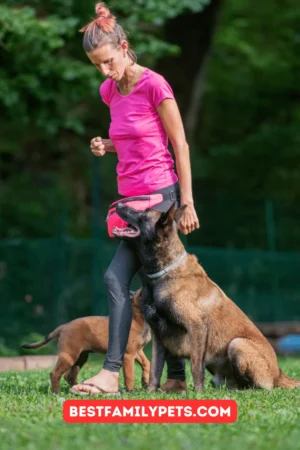
Belgian Malinois Pitbull Mix: Loyal, Energetic & Smart
-


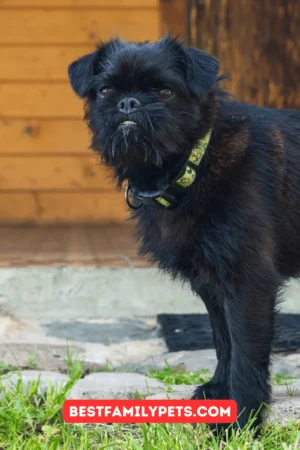
Overview of Small Belgian Dog Breeds
-


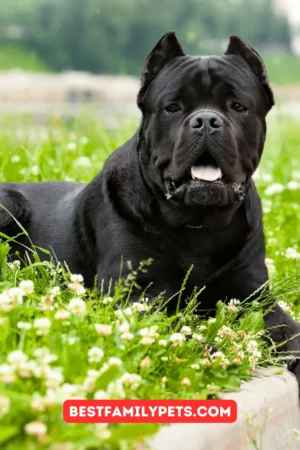
Cane Corsos and Aggression: What You Need to Know?
-



Wiry Doxie: Exploring the Wire haired Dachshund
-


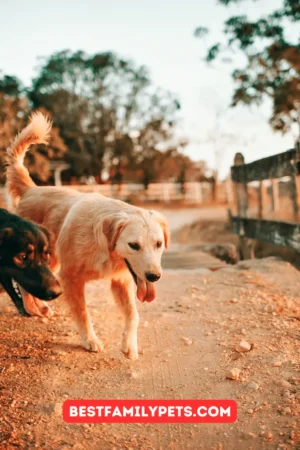
What Dogs Are Banned in California?
-


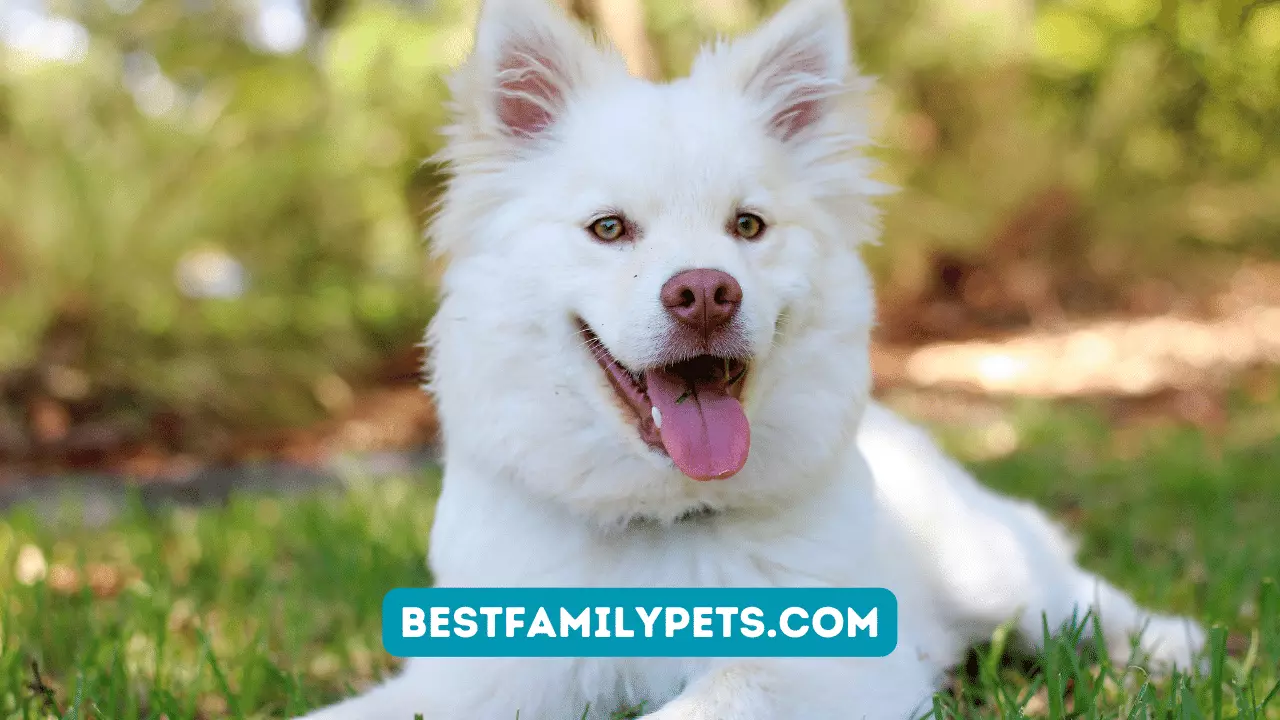
Which Kind of Dog is Perfect For Me?
-



5 of the Friendliest Dog Breeds in the World
-



5 Things You Need to Know Before Getting a Family Pet
-



Finding the Best Harness for Your Golden Retriever
-


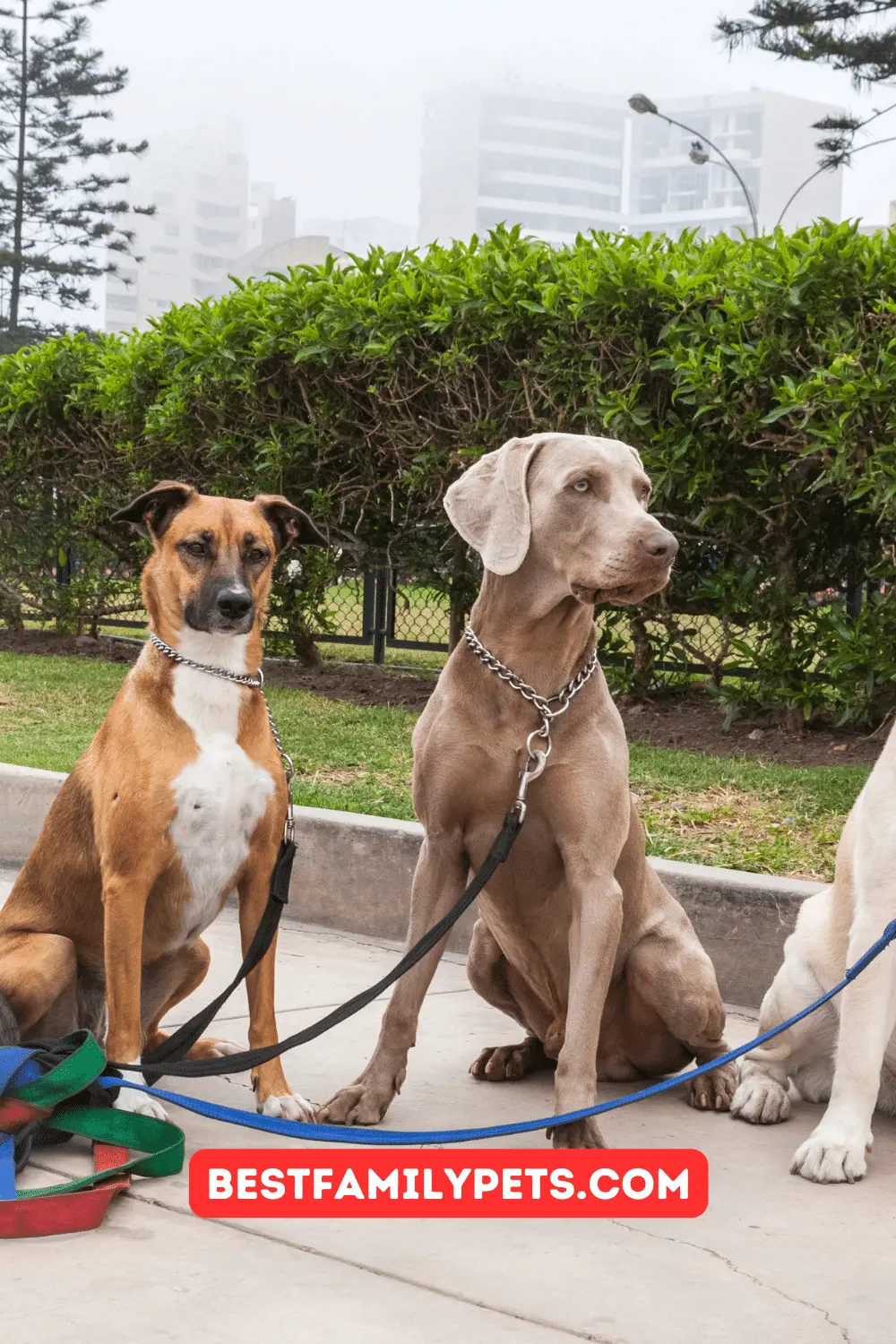
Exploring The Diverse World Of Dog Breeds: Unveiling The Canine Tapestry
-


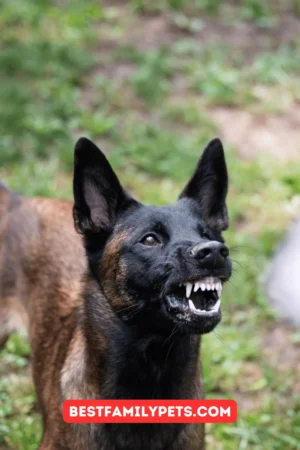
Are Malinois Dogs Dangerous? Facts, Myths, and Insights
-



Weimaraner Puppies: A-Z Information
-


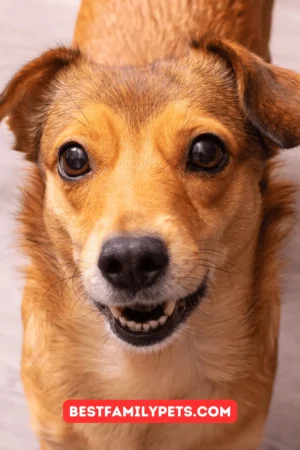
13 Dogs with Curly Ears: A Guide to Adorable Floofs with Floppy Folds

